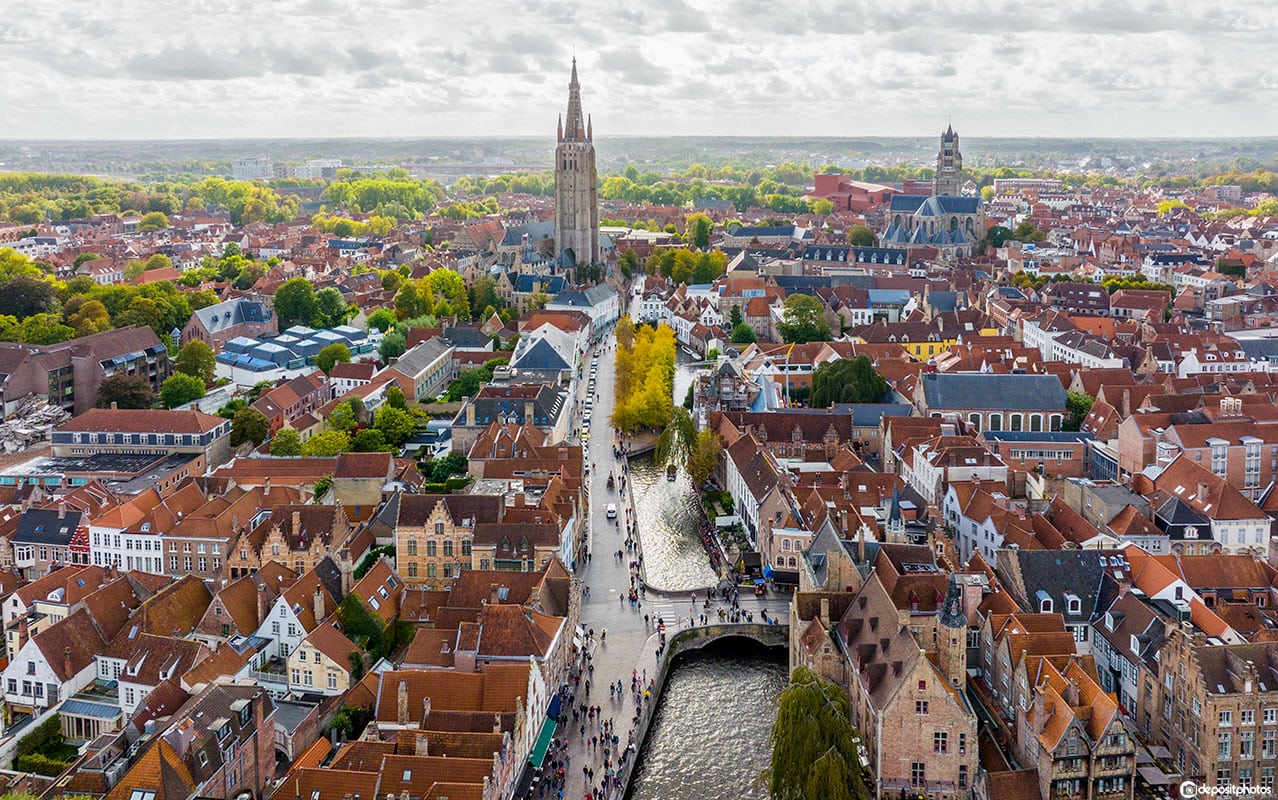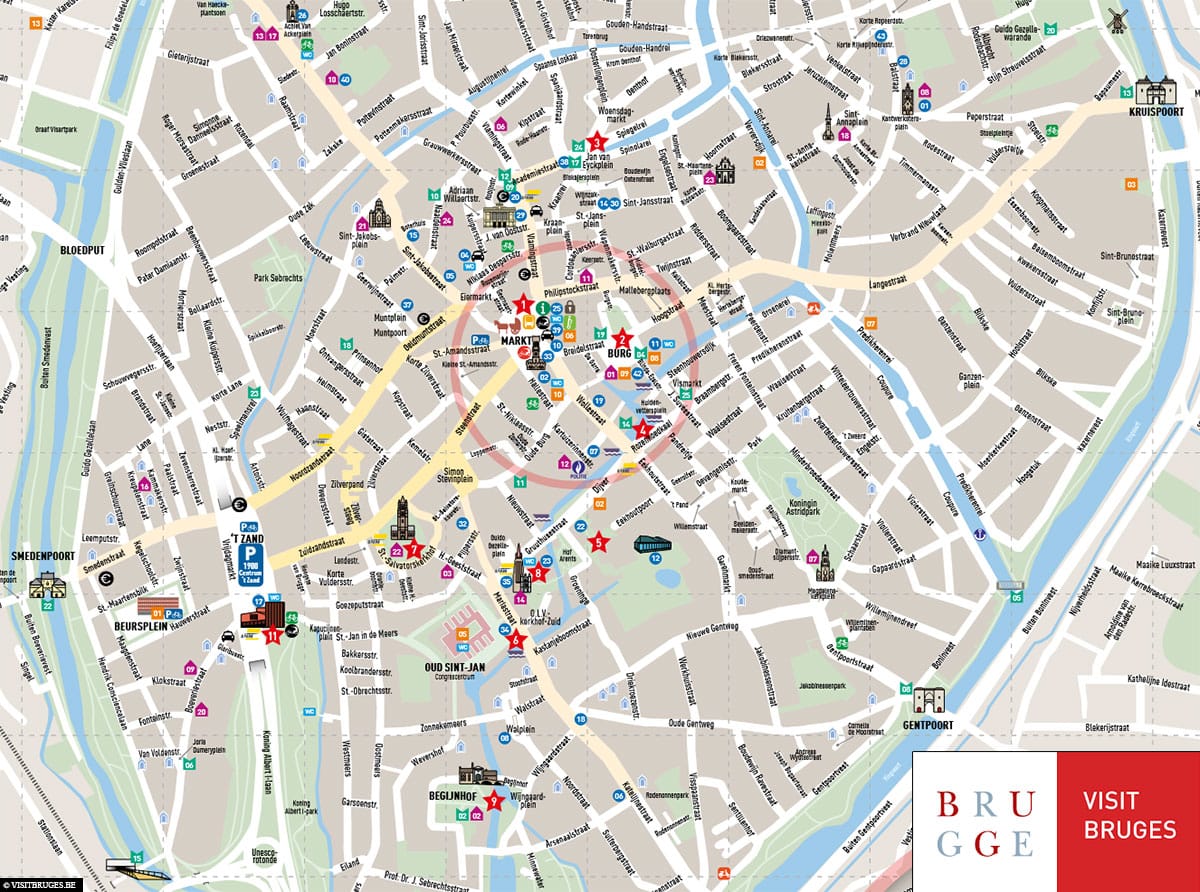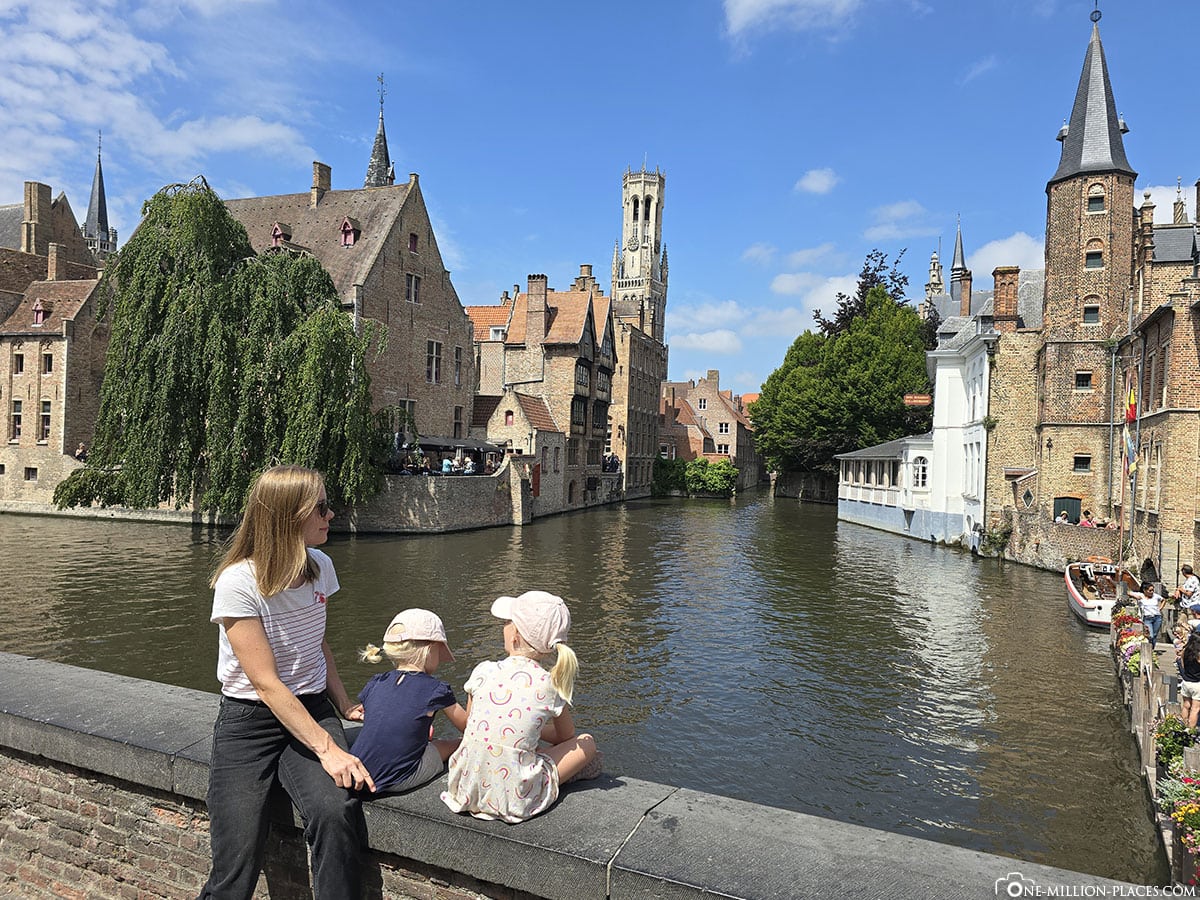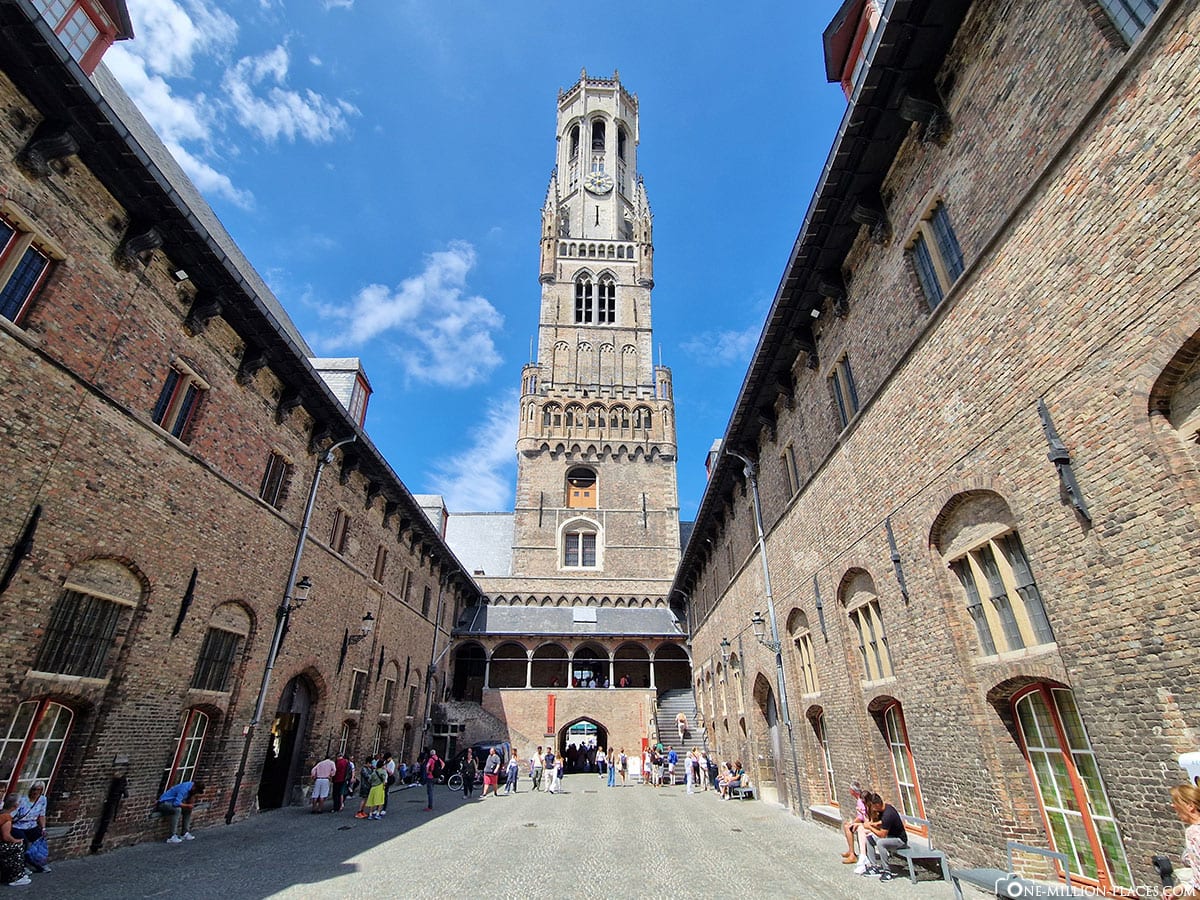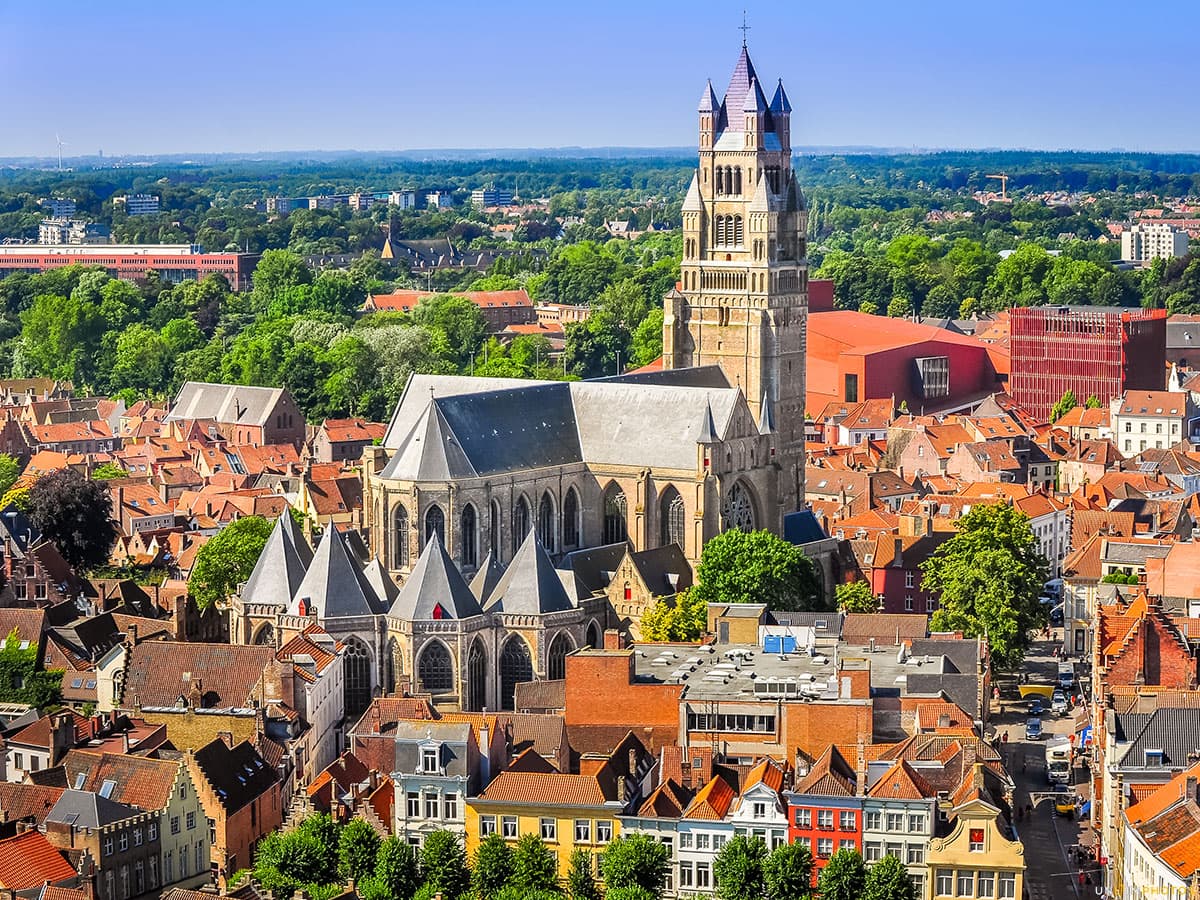Have you ever been to Bruges? Rarely has a city surprised us so positively and pleased us so much! Bruges is a beautiful medieval city with many sights and great photo opportunities on every corner. No wonder the entire old town has been declared a UNESCO World Heritage Site. And we actually never had Bruges on our bucket list before. And today we ask ourselves: why? We explored the old town on our own with our two kids on a beautiful summer’s day and show you our top 11 photo spots, Instagram spots and sights.

Table of contents
Things to know about the city of Bruges (Belgium)
Bruges is a historically important city in the northwest of Belgium and the capital of the province of West Flanders. It is only around 15 kilometers from the North Sea coast and has around 120,000 inhabitants. This makes it the seventh largest city in Belgium in terms of population. Bruges is often referred to as the “Venice of the North” due to its excellently preserved medieval old town and its extensive canal system. Its history dates back to the 9th century, when the city became an important center of the Hanseatic League through trade connections with England, Scandinavia and the Baltic. Especially in the 13. and In the 14th century, Bruges experienced a heyday as an international trading center for textiles.
The old town of Bruges was declared a UNESCO World Heritage Site in 2000, as it offers one of the best-preserved medieval cityscapes in Europe. The old town was never destroyed by war or large-scale fires. Visitors will find numerous sights here, five of which stand out in particular: the Belfry of Bruges, an 83 meter high tower with a panoramic view over the city, the Church of Our Lady with the famous Michelangelo Madonna, the Grote Markt, the historic heart of the city with magnificent gabled houses, the Beguinage, a peaceful retreat with religious origins and the Groeningemuseum with an impressive collection of Flemish masterpieces.
Zeebrugge is the port district of Bruges and is located around 15 kilometers northwest of the historic city center directly on the North Sea. The port is one of the largest in Belgium and is an important transshipment point for containers, vehicles and ferry traffic. Zeebrugge is also an important cruise port, from where thousands of day visitors are brought to Bruges by bus every day.
The entire old town of Bruges was once surrounded by a medieval city wall. Today, only parts of the original fortifications remain, but four imposing city gates still bear witness to their former importance: the Kruispoort, Ezelpoort, Gentpoort and Smedenpoort. Most of these gates date back to the 14th century and have been restored several times over the centuries. They still mark the old entrances to the town and are impressive examples of medieval fortified architecture.
A map of the old town (sights) of Bruges
Most of Bruges’ sights can be found in the old town and everything is within easy walking distance. Visit Bruges has a great brochure “Oooh! Bruges“, in which 4 different walks through the old town are described in detail. Further information can be found on the official website.
Our top 11 photo spots & sights
We would like to introduce you to the most famous sights and photo spots in Bruges. We parked our car in the “Parking Old Saint-John” parking lot (location in Google Maps). Parking here costs just EUR 2 per hour, which is a really fair price! And from here, it really is only a few meters to the old town.
Site Oud Sint-Jan (Saint Jan’s Hospital)
Our first port of call was the grounds of the Sankt Jansspital. The St. John’s Hospital in Bruges is one of the oldest surviving hospitals in Europe and was founded in the 12th century. For many centuries, it served as a care facility for the sick, pilgrims and the needy and was run by nuns. Today, the impressive brick building houses a museum that offers visitors an insight into medical care in the Middle Ages and displays an important collection of religious works of art. With its authentic atmosphere, the historic hospital chapel and the originally preserved wards, the St. John’s Hospital conveys a vivid picture of life and work in medieval Bruges.
Church of Our Lady (Onze-Lieve-Vrouwekerk) and Gruuthusemuseum
The Liebfrauenkirche is one of the most striking buildings in Bruges and impresses with its 115-meter-high brick tower, which is one of the tallest in the world. Originally built in the 13th century, it was extended over the centuries and combines Gothic and Romanesque elements. The church is particularly famous for its art treasures, including the world-famous Madonna and Child by Michelangelo – one of the few sculptures by the artist to leave Italy during his lifetime. It is also home to magnificent tombs of the Burgundian dukes Mary of Burgundy and Charles the Bold, reminders of Bruges’ illustrious past.
The Gruuthusemuseum is located right next to the Church of Our Lady in the magnificent city palace of the famous van Gruuthuse family. This manor house dates back to the Middle Ages and was extended in the 15th century by Lodewijk van Gruuthuse. He pursued the life motto “Plus est en vous” (“There is more in you”), which still characterizes the museum’s concept today. After extensive restoration work and the construction of a new pavilion to connect with the neighboring Church of Our Lady, the museum was reopened in 2019 and equipped with modern exhibitions. Inside the Gruuthusemuseum, over 600 exhibits tell the story of Bruges from the 15th to the 19th century. The collection includes magnificent tapestries, stained glass windows, elegant wooden sculptures, historical lace, Burgundian manuscripts and Chinese porcelain.
Bonifazius Bridge (Bonifaciusbrug) – pure romance in the old town
Directly behind the Church of Our Lady you will find one of the most photographed places in Bruges – the Boniface Bridge (Bonifaciusbrug). Although the Bonifazius Bridge is relatively young compared to other buildings in the city – it dates back to the early 20th century – it blends harmoniously into the medieval cityscape. The bridge spans a small side canal of the Dijver and offers a great view of old brick houses and picturesque gabled houses by the water. A great Instagram spot.
Rozenhoedkaai – Bruges’ most famous photo motif
The Rozenhoedkaai is one of the most photographed places in Bruges and is an absoluteInstagram hotspot. In earlier times, this quay was an important transshipment point for salt traders. It was then called “Zoutdijk” until stalls selling rosaries appeared in the 18th century and gave it its current name. Today, the Rozenhoedkaai offers a wonderful view of the canals in Bruges, historic gabled houses, the back of the Basilica of the Holy Blood, the Town Hall and the Belfry – a classic postcard view of Bruges.
Castle Square (De Burg) and City Hall (Stadhuis Brugge)
The Burgplatz is one of the most historic places in Bruges and, with its impressive architecture, forms the political and religious center of the city. The first fortress was built here by the Counts of Flanders as early as the 9th century, giving the square its name. Today, Burgplatz is an elegant square lined with magnificent buildings that impresses visitors with its mixture of Gothic, Renaissance and Baroque styles.
The most striking feature of the square is the Stadhuis, Bruges’ town hall. It was built between 1376 and 1421 in the Flemish Gothic style and is one of the oldest town halls in the Netherlands. The richly decorated façade with its filigree turrets and statues symbolizes the wealth and political importance of Bruges in the late Middle Ages. Particularly worth seeing is the Gothic hall inside, whose artistically painted vaulted ceiling and murals tell the story of the city. In addition to the town hall, Burgplatz is also home to the Basilica of the Holy Blood, the old court palace and the city law building, which together form an impressive architectural ensemble.
Market square (Grote Markt)
We were really impressed when we arrived at the market square in Bruges. The Grote Markt forms the center of the city and is one of the most impressive historical squares in Europe. Surrounded by colorful gabled houses from the 17th century, lively street cafés and magnificent town houses, it has been the center of trade, a social meeting place and a venue for public events for centuries. The square covers an area of around one hectare and is now largely car-free.
We grabbed something to eat here at lunchtime and treated ourselves to an ice cream 🙂
Belfort of Bruges – A UNESCO World Heritage Site
The Belfort of Bruges is one of the city’s most famous landmarks and an important symbol of the independence and civic spirit of medieval Flanders. The tower was built in the 13th century and originally served as a watchtower, treasury and archive for the town. At a height of 83 meters, it towers far above the market square and offers a breathtaking view from its viewing platform over the rooftops of Bruges all the way to the North Sea coast. Those who climb the 366 steps to the top are not only rewarded with a magnificent view, but also experience the fascinating bell mechanism of the carillon with its 47 bells up close.
The Belfort – together with the other Flemish belfries – has been a UNESCO World Heritage Site since 1999. These towers stand for the emerging self-government of cities in the Middle Ages and embody the political and economic power of the citizens. In Bruges, the Belfort was the center of municipal decision-making for centuries and played a central role in public life.
Around Jan van Eyck Square
Jan van Eyck Square is located in the northern part of Bruges’ old town and is one of the city’s most elegant and culturally significant squares. It is dedicated to the famous Flemish painter Jan van Eyck, whose statue stands in the center of the square. In the Middle Ages, the square was the commercial gateway to the city: this was where the old port of Bruges was located, where ships docked and international merchants unloaded their goods. Even today, magnificent facades and former office buildings bear witness to the former wealth and importance of this district.
There are several buildings worth seeing in the immediate vicinity: the Tolhuis (Customs House), an elegant Baroque building from the 17th century, now houses an archive. Directly opposite is the Poortersloge, a late Gothic building that used to be a meeting place for the wealthy bourgeoisie. The impressive former merchant’s house Huis ter Beurze, forerunner of the modern stock exchange, is also very close by.
St. Salvator’s Cathedral (Sint-Salvatorskathedraal)
St. Salvator’s Cathedral (Sint-Salvatorskathedraal) is the main church in Bruges and one of the oldest preserved churches in the city. It was originally built in the 12th century as a Romanesque parish church and later extended in the Gothic style. After the French Revolution and the demolition of the former cathedral, St. Salvator became the episcopal church of the newly founded diocese of Bruges in 1834. At the same time, it was given its striking neo-Gothic tower, which dominates the cityscape with its height of around 100 meters.
The Bruges canals
A boat trip through the picturesque canals of Bruges is one of the best ways to discover the city from a very special perspective. The city is therefore often referred to as the “Venice of the North”. From the water, you glide past historic gabled houses, old bridges and tranquil waterways that characterize the medieval townscape. Most boat trips start at Rozenhoedkaai (location in Google Maps) and take around 30 to 40 minutes. During the trip, experienced guides tell exciting stories about the history of the city, famous buildings and life on the waterfront.
Begijnhof (Ten Wijngaerde) – A UNESCO World Heritage Site
The Begijnhof (Ten Wijngaerde) in Bruges is a historic quarter that has been a UNESCO World Heritage Site since 1998 and is considered an outstanding example of the way of life of the Beguines – religious women who lived in community but did not form a monastery. The Begijnhof was founded in the 13th century and offers a unique insight into a particular form of medieval women’s life, which stood between secular freedom and religious devotion. The extensive grounds, characterized by white houses with simple gardens, are filled with a quiet, monastery-like atmosphere. In the center is the small church, which was originally dedicated to Saint Elizabeth of Thuringia.
More sights & photo spots in Bruges
In addition to these “main sights”, there are countless other beautiful photo spots and sights in the old town.
For example, we found the Sashuis, a historic lock house from the 17th century that now serves as a charming exhibition venue, a great motif. The Huis Ter Beurze, once an important meeting place for merchants and forerunner of the stock exchange, impresses with its Gothic architecture and now houses a hotel. The Sint-Donaasproosdij used to be the seat of an Augustinian monastery, which is now used for cultural events and offers a special atmosphere with its quiet inner courtyard.
What we unfortunately didn’t manage to see during our visit – but would really have liked to – are the 4 old city gates (Kruispoort, Ezelpoort, Gentpoort and Smedenpoort) and the 4 historic windmills on the city ramparts to the east of the old town, along the so-called Kruisvest green corridor: Windmill The New Parrot (Nieuwe Papegaai), Bonne-Chière Mill (Bonne-Chièremolen), Koelewei Mill (Koeleweimolen) and the Sint-Janshuismolen, built in 1770, still in working order and open to visitors.
“Overtourism” in Bruges
The phenomenon of “overtourism” affects numerous cities around the world whose historic old towns or natural attractions are barely able to cope with the onslaught of millions of visitors. In Europe, Venice, Barcelona, Amsterdam, Dubrovnik and Bruges in particular are suffering from overcrowded streets, rising rents and the displacement of the local population. Cities around the world such as Kyoto, Bali, Machu Picchu and New York are also struggling with similar problems. Up to 30 million visitors come to Venice every year – with a population of only 50,000 inhabitants in the historic center. That’s pretty blatant.
Bruges is one of the most popular city destinations in Europe and is visited by around 8 to 9 million tourists every year – with a population of only around 120,000 people. Particularly serious is the high proportion of day visitors, most of whom come to Zeebrugge on coaches or cruise ships and pass through the old town within a few hours without making a lasting contribution to the local economy. In 2023, for example, over 500,000 cruise passengers arrived – many of them during peak times between April and October. The old town with its narrow alleyways, covering an area of around one square kilometer, is only suitable for such large numbers of visitors to a limited extent. On peak days, up to 50,000 people are in the city center at the same time.
This form of mass tourism leads to noticeable problems: rising rents, the disappearance of local stores, noise, garbage, and an increasing “Disneyfication” of the cityscape, in which everyday life is increasingly subordinated to the interests of tourists. Many locals complain about the loss of authenticity and places of retreat. The UNESCO World Heritage Site is also at risk from wear and tear and overloading. The city council has now taken various countermeasures. Since 2020, bus parking spaces have been relocated outside the city center, there is no more tourist advertising and the number of cruise ships in Zeebrugge is to be gradually reduced. It also promotes “quality tourism” – i.e. stays lasting several days, museum visits and off-season travel.
More activities & tours in Bruges
Take a look at GetYourGuide. Here you will find many exciting tours & activities.
Is a visit to Bruges worthwhile?
Absolutely! We really enjoyed our tour of the old town of Bruges. Rarely have we been so positively surprised by a city. We hadn’t given Bruges much thought beforehand and never had the city on our bucket list. The old town with its many canals enchanted us all the more. And we could certainly have spent 1 or 2 more days in the city, as we didn’t see everything during our day visit.
We can very well understand why Bruges is perhaps the best-preserved medieval city in Europe. The city has something magical and unique about it – an absolute must-see! ❤

